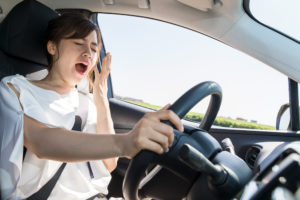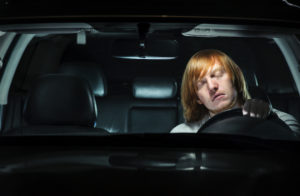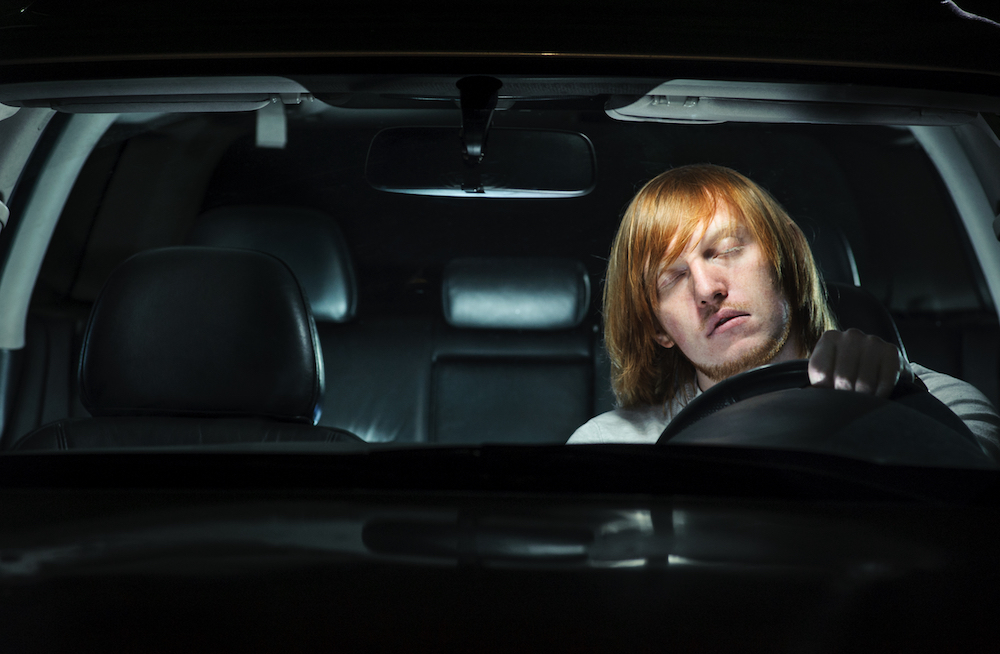 Driving while tired can be tempting, but you should know that it’s extremely dangerous, for you, other drivers and pedestrians on the road. The Arizona Department of Public Safety reports driving on 19 hours without sleep is comparable to a blood alcohol level of 0.5 percent, while driving on 24 hours without sleep is similar to driving with a blood alcohol level of .1 percent.
Driving while tired can be tempting, but you should know that it’s extremely dangerous, for you, other drivers and pedestrians on the road. The Arizona Department of Public Safety reports driving on 19 hours without sleep is comparable to a blood alcohol level of 0.5 percent, while driving on 24 hours without sleep is similar to driving with a blood alcohol level of .1 percent.
There is currently no drowsy driving law in Arizona, even though drowsy driving around the country is the cause of 100,000 car crashes a year, resulting in 71,000 people injured and 1,500 people dead, reports the National Conference of State Legislatures. Some states, like Arkansas and New Jersey, do have drowsy driving laws, and industries such as trucking require certain periods of rest to prevent accidents caused by lack of sleep. In Arizona, drowsy driving can lead to charges under statutory provisions of reckless driving, and a drowsy driver who causes a fatality may be charged with a possible vehicular homicide.
If you’re in an accident with a driver whom you suspect was driving while tired, their negligent behavior posed a serious risk while they were on the road. Here is what to do if you’re in an accident with someone who you suspect drove while sleepy, and how to avoid driving drowsily yourself.
 Signs a Driver Might Be Drowsy
Signs a Driver Might Be Drowsy
Car accidents are scary, but it’s important to stay calm and be observant of the behavior of the person you are in an accident with. Any erratic behavior such as drifting, hitting a guard rail, sudden swerving, or extreme acceleration or deceleration may be indicators that the driver is drowsy. In an accident, make sure that emergency services are called. Watch out for the other driver exhibiting signs such as:
- Heavy eyelids, bloodshot eyes, or frequent blinking
- Slurred or slowly responsive speech
- Frequent yawning or eye rubbing
- Dazed and confused demeanor
- Sluggish body language or difficulty keeping head up
The Centers for Disease Control and Prevention reports 1 in 25 adult drivers report having fallen asleep while driving in the past month. According to the National Sleep Foundation, 60 percent of adult drivers have driven a vehicle while drowsy in the past year, and 37 percent fell asleep at the wheel in the past year. Unfortunately, drowsy driving is far too common, and it may be the negligent cause of an accident you’re in.
If you see any of the warning signs above or have any suspicion about possible drowsy driving on behalf of the other party in an accident you’re in, mention it to police when they arrive. You’ll also want to be sure to obtain witness statements if possible, who may be able to confirm unusual and dangerous driving behaviors in a police report.
Because there are challenges in proving drowsing driving in a car accident claim, taking as much photographic and video evidence at the scene of the accident as possible is helpful. It’s also vital to contact police, and get the full contact information of any witnesses. Jot down any statements the driver makes that indicate they were driving while tired. Consulting with a car accident attorney in Phoenix is helpful in piecing together the evidence that substantiates a car accident claim due to drowsy driving.
 Don’t Drive While Drowsy
Don’t Drive While Drowsy
If you drive while drowsy, you may be held liable for negligence if you get into a car accident – or, worse, kill someone or yourself. Keep these tips in mind to avoid becoming a scary drowsy driving statistic in Arizona.
- If you are exhibiting any of the above drowsy symptoms, do not risk getting behind a wheel.
- If you think you may have a sleep disorder, contact a physician and get proper treatment before resuming driving.
- If you start to feel tired while driving, pull over, and stop driving. Either sleep until you are rested, or call someone for a ride.
- If you know you have not received adequate sleep, of at least 7 hours in the past 24 hours, do not drive.
- Do not drive while under the influence of alcohol or medication that may make you drowsy.
- If you have to drive for long stretches at a time, pull over and take a nap every few hours.
- Be aware of “sleep debt,” which occurs with multiple nights of inadequate sleep. If you know you have experienced sleep debt and plan on driving, make up for the debt with proper rest before driving.
While driving at all times, be aware of the behaviors of other drivers. Avoid drivers who show signs of drowsy driving, by pulling off to the side of the road, taking down the license plate number, and notifying authorities. Remember that no car trip is so important that you should drive while tired and put yourself and others at risk.


Recent Comments